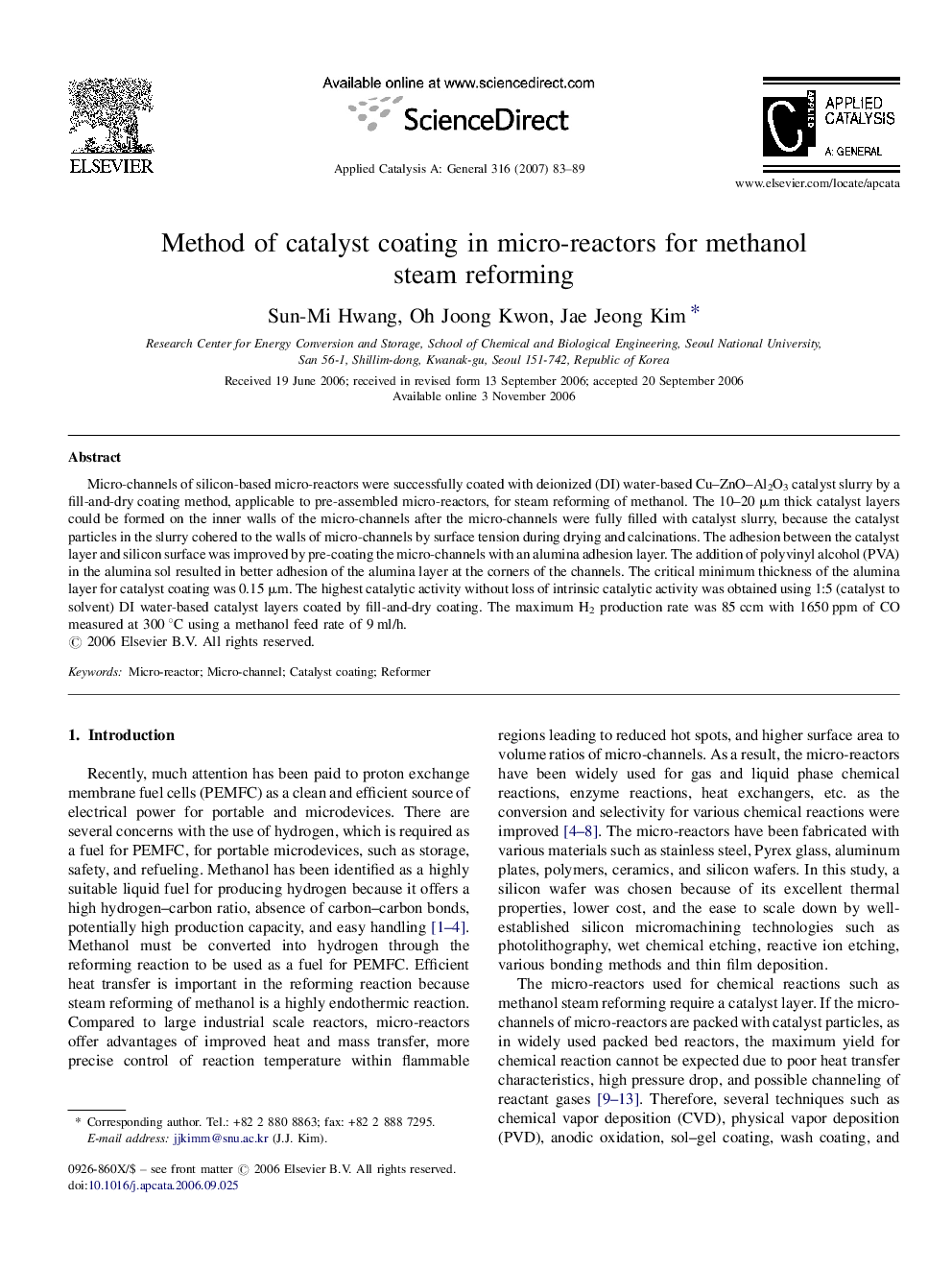| Article ID | Journal | Published Year | Pages | File Type |
|---|---|---|---|---|
| 43741 | Applied Catalysis A: General | 2007 | 7 Pages |
Micro-channels of silicon-based micro-reactors were successfully coated with deionized (DI) water-based Cu–ZnO–Al2O3 catalyst slurry by a fill-and-dry coating method, applicable to pre-assembled micro-reactors, for steam reforming of methanol. The 10–20 μm thick catalyst layers could be formed on the inner walls of the micro-channels after the micro-channels were fully filled with catalyst slurry, because the catalyst particles in the slurry cohered to the walls of micro-channels by surface tension during drying and calcinations. The adhesion between the catalyst layer and silicon surface was improved by pre-coating the micro-channels with an alumina adhesion layer. The addition of polyvinyl alcohol (PVA) in the alumina sol resulted in better adhesion of the alumina layer at the corners of the channels. The critical minimum thickness of the alumina layer for catalyst coating was 0.15 μm. The highest catalytic activity without loss of intrinsic catalytic activity was obtained using 1:5 (catalyst to solvent) DI water-based catalyst layers coated by fill-and-dry coating. The maximum H2 production rate was 85 ccm with 1650 ppm of CO measured at 300 °C using a methanol feed rate of 9 ml/h.
Graphical abstractThis paper describes a fill-and-dry coating method using slurry-type catalyst in the micro-channels of pre-assembled micro-reactors for methanol stream reforming. We found that the catalyst activity was affected by the kinds of solvents as well as the ratio of catalyst to solvent of the slurry. In addition, a thin adhesive layer was required to improve the adhesion between the substrate surface and the catalyst layer. Figure optionsDownload full-size imageDownload as PowerPoint slide
